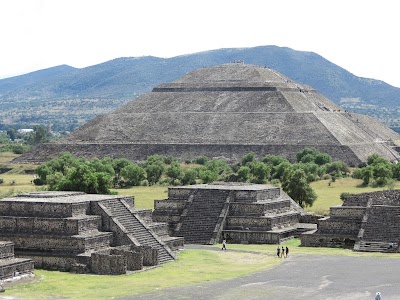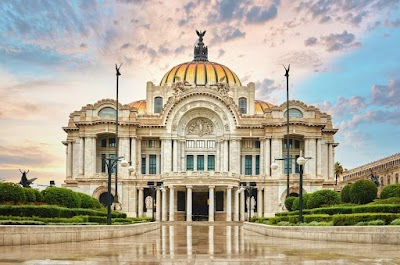Teotihuacan (Teotihuacan)
Overview
Teotihuacan, nestled in the Basin of Mexico just 30 miles northeast of modern-day Ciudad de México, is one of the most mesmerizing archaeological sites in the world. Known as the "City of the Gods," this ancient metropolis is a must-visit for travelers fascinated by history, culture, and the enigmas of ancient civilizations.
Founded around 100 BCE, Teotihuacan blossomed into one of the largest cities in the pre-Columbian Americas, reaching a peak population of over 125,000 inhabitants. Despite its grandeur, the origins of this city remain cloaked in mystery, as no records of its founders have survived. By the height of the Common Era, Teotihuacan had evolved into a thriving urban center, distinguished by its intricate urban layout, impressive architectural structures, and advanced societal organization.
Monumental Pyramids
Among Teotihuacan's most striking features are its monumental pyramids. The Pyramid of the Sun, the largest structure in the city, towers at an impressive 216 feet. Constructed around 200 CE, this architectural marvel is not only a feat of engineering but also a sacred site believed to have played a role in rituals and astronomical studies. Adventurous visitors can ascend the steep steps to the summit, where they are greeted with breathtaking panoramic views of the ruins and the surrounding landscape.
Just slightly smaller yet equally awe-inspiring is the Pyramid of the Moon, located at the northern end of the main thoroughfare known as the Avenue of the Dead. This pyramid served as a central ceremonial hub, with the adjacent Plaza of the Moon offering rich insights into the cultural and religious life of the city, featuring altars and sculptures uncovered through archaeological efforts.
The Avenue of the Dead
Strolling along the Avenue of the Dead, which stretches approximately 2.5 kilometers, is akin to stepping back in time to an era of grandeur and mystery. This central avenue is flanked by the remnants of noble palaces, residential compounds, and smaller pyramids, providing a glimpse into the daily lives of Teotihuacan's inhabitants. The avenue culminates at the Citadel, a vast complex believed to have served as the city's administrative and potentially religious heart.
One particularly captivating structure within the Citadel is the Temple of the Feathered Serpent, also known as the Temple of Quetzalcoatl. Adorned with intricate carvings of feathered serpent heads, this temple showcases the artistic and religious sophistication of Teotihuacan. Recent archaeological discoveries, including mass graves, have unveiled that human sacrifices played a crucial role in the city's religious practices, adding another layer of intrigue to its history.
Cultural Influence
Teotihuacan's influence extended well beyond its borders, with its unique architectural styles, artifacts, and murals discovered at distant Mesoamerican sites. This indicates a web of extensive trade networks and cultural exchange. The art and iconography of Teotihuacan were particularly influential, characterized by distinct styles and religious motifs that resonated throughout the region. The vibrant murals, depicting scenes of gods, animals, and celestial events, are enduring remnants of the artistic expression that flourished in this ancient city.
Despite its significance, Teotihuacan mysteriously began to decline around the 7th or 8th century. Theories regarding its fall range from internal social conflicts to invasions by rival groups or environmental shifts. By the time the Aztecs stumbled upon the site centuries later, it was long abandoned. In awe of its ruins, they named it Teotihuacan, which translates to "the place where gods were born."
Visiting Teotihuacan Today
Today, Teotihuacan is a UNESCO World Heritage Site that draws millions of visitors from around the globe. The site is meticulously preserved, and ongoing excavations continue to uncover new facets of this ancient wonder. For those planning a visit, comfortable shoes, sunscreen, and plenty of water are essential, as exploring the expansive site can easily take an entire day.
No trip to Teotihuacan is complete without a visit to the on-site museum, where a collection of artifacts unearthed from the ruins is displayed. Here, visitors can examine pottery, sculptures, and tools that provide insight into the everyday lives of the Teotihuacan people. Additionally, guided tours are available, offering deeper insights into the site's history, architecture, and the latest archaeological discoveries.
In conclusion, Teotihuacan is more than just an archaeological site; it serves as a window into a lost epoch of human civilization. Its majestic pyramids, intricate murals, and the storied Avenue of the Dead speak of a society that was both highly advanced and deeply spiritual. The enduring legacy of Teotihuacan continues to captivate the imaginations of those who visit, making it an unforgettable destination that offers a profound connection to the past.






